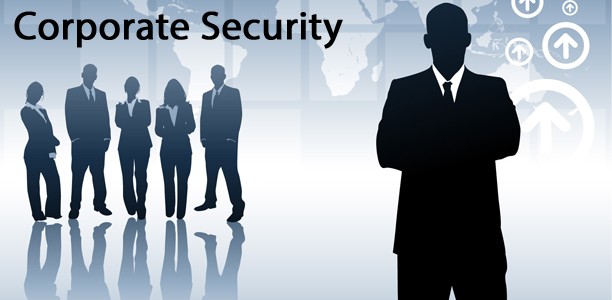Releasing the Power of Corporate Security: A Comprehensive Overview
Releasing the Power of Corporate Security: A Comprehensive Overview
Blog Article
From Cybersecurity to Physical Measures: Reinforcing Business Safety in a Transforming Globe
In today's quickly evolving electronic landscape, the significance of corporate protection can not be overstated. As cyber threats end up being progressively advanced and widespread, companies must go past traditional cybersecurity actions to protect their properties and operations - corporate security. This is where the integration of physical safety measures ends up being crucial. By integrating the toughness of both cybersecurity and physical safety and security, business can develop a comprehensive defense approach that resolves the diverse variety of hazards they face. In this discussion, we will check out the transforming threat landscape, the need to integrate cybersecurity and physical safety, the execution of multi-factor verification measures, the importance of worker understanding and training, and the adjustment of protection measures for remote workforces. By analyzing these essential locations, we will certainly obtain beneficial understandings right into how organizations can enhance their company protection in an ever-changing globe.
Understanding the Altering Hazard Landscape
The progressing nature of the modern-day world requires a detailed understanding of the transforming risk landscape for reliable corporate security. It is important for companies to remain educated and adjust their protection measures to deal with these progressing risks.
One key facet of comprehending the altering danger landscape is acknowledging the various types of risks that organizations face. Additionally, physical threats such as theft, criminal damage, and company reconnaissance stay common worries for services.
Tracking and examining the danger landscape is essential in order to recognize possible threats and vulnerabilities. This includes staying upgraded on the most recent cybersecurity fads, assessing hazard knowledge records, and carrying out normal threat analyses. By comprehending the changing hazard landscape, companies can proactively execute appropriate safety and security measures to minimize dangers and protect their properties, track record, and stakeholders.
Integrating Cybersecurity and Physical Safety And Security
Incorporating cybersecurity and physical safety is essential for comprehensive business protection in today's interconnected and electronic landscape. As companies progressively rely upon innovation and interconnected systems, the limits in between physical and cyber risks are coming to be blurred. To effectively protect versus these threats, an all natural approach that integrates both cybersecurity and physical security procedures is essential.
Cybersecurity concentrates on safeguarding digital properties, such as systems, networks, and data, from unapproved accessibility, interruption, and burglary. Physical safety and security, on the various other hand, includes measures to safeguard physical properties, individuals, and centers from threats and susceptabilities. By incorporating these 2 domain names, companies can resolve susceptabilities and dangers from both electronic and physical angles, consequently boosting their total safety posture.
The assimilation of these 2 disciplines permits for a more thorough understanding of protection risks and enables a unified action to incidents. As an example, physical gain access to controls can be enhanced by integrating them with cybersecurity methods, such as two-factor authentication or biometric identification. Cybersecurity measures can be complemented by physical safety and security procedures, such as security video cameras, alarm systems, and safe access factors.

Implementing Multi-Factor Authentication Steps
As organizations significantly prioritize thorough safety and security actions, one effective approach is the application of multi-factor authentication procedures. Multi-factor verification (MFA) is a security approach that requires customers to supply numerous types of recognition to access a system or application. This approach includes an added layer of security by incorporating something the user recognizes, such as a password, with something they have, like a fingerprint or a safety token.
By implementing MFA, organizations can dramatically improve their safety and security position - corporate security. Conventional password-based authentication has its restrictions, as passwords can be quickly jeopardized or failed to remember. MFA mitigates these risks by adding an added verification element, making it a lot more hard for unauthorized people to get to sensitive information
There are several kinds of multi-factor Going Here authentication approaches available, consisting of biometric authentication, SMS-based verification codes, and equipment tokens. Organizations need to assess their certain requirements and choose the most suitable MFA solution for their requirements.
However, the implementation of MFA must be meticulously prepared and performed. It is essential to strike an equilibrium in between safety and security look at this site and usability to stop user aggravation and resistance. Organizations should also consider possible compatibility issues and give sufficient training and assistance to guarantee a smooth transition.
Enhancing Staff Member Understanding and Training
To reinforce business safety and security, organizations must prioritize boosting staff member awareness and training. Numerous security violations take place due to human error or absence of awareness.
Reliable staff member recognition and training programs ought to cover a wide variety of topics, including information protection, phishing attacks, social design, password health, and physical safety steps. These programs ought to be tailored to the details requirements and obligations of various worker functions within the company. Normal training simulations, sessions, and workshops can aid workers establish the essential skills and expertise to determine and respond to protection hazards properly.
In addition, organizations ought to motivate a culture of security recognition and give ongoing updates and suggestions to maintain workers notified concerning the current hazards and mitigation strategies. This can be done via inner communication networks, such as newsletters, intranet portals, and email projects. By fostering a security-conscious workforce, organizations can dramatically minimize the possibility of protection cases and secure their important assets from unapproved accessibility or concession.

Adapting Safety Procedures for Remote Workforce
Adjusting company security measures to accommodate a remote labor force is necessary in making sure the defense of sensitive details and possessions (corporate security). With the boosting fad of remote job, companies must execute suitable safety procedures to minimize the threats connected with this brand-new means of functioning
One crucial aspect of adjusting security measures for remote job is developing safe and secure communication channels. Encrypted messaging systems and digital exclusive networks (VPNs) can aid shield delicate details and prevent unapproved accessibility. Additionally, companies ought to enforce the use of solid passwords and multi-factor verification to improve the safety of remote gain access to.
Another vital consideration is the implementation of safe and secure remote accessibility options. This includes offering employees with safe and secure accessibility to corporate sources and data through digital desktop infrastructure (VDI), remote desktop computer procedures (RDP), or cloud-based services. These technologies ensure that delicate information continues to be secured while enabling staff members to execute their Learn More Here roles properly.

Last but not least, detailed safety and security understanding training is essential for remote workers. Training sessions must cover ideal practices for safely accessing and handling delicate information, determining and reporting phishing attempts, and maintaining the general cybersecurity health.
Final Thought
Finally, as the threat landscape remains to develop, it is vital for companies to reinforce their protection gauges both in the cyber and physical domains. Incorporating cybersecurity and physical protection, applying multi-factor verification actions, and enhancing staff member awareness and training are essential steps towards achieving robust corporate security. Additionally, adjusting protection actions to fit remote workforces is critical in today's transforming globe. By carrying out these steps, organizations can mitigate threats and secure their useful assets from potential hazards.
In this conversation, we will certainly check out the transforming danger landscape, the need to incorporate cybersecurity and physical protection, the application of multi-factor authentication actions, the value of employee recognition and training, and the adaptation of security procedures for remote workforces. Cybersecurity procedures can be complemented by physical protection steps, such as security cams, alarms, and safe and secure accessibility points.
As companies increasingly focus on detailed security procedures, one effective strategy is the application of multi-factor authentication measures.In conclusion, as the danger landscape proceeds to develop, it is vital for organizations to reinforce their safety measures both in the cyber and physical domains. Incorporating cybersecurity and physical safety, implementing multi-factor verification actions, and enhancing worker recognition and training are vital actions in the direction of attaining durable company safety and security.
Report this page